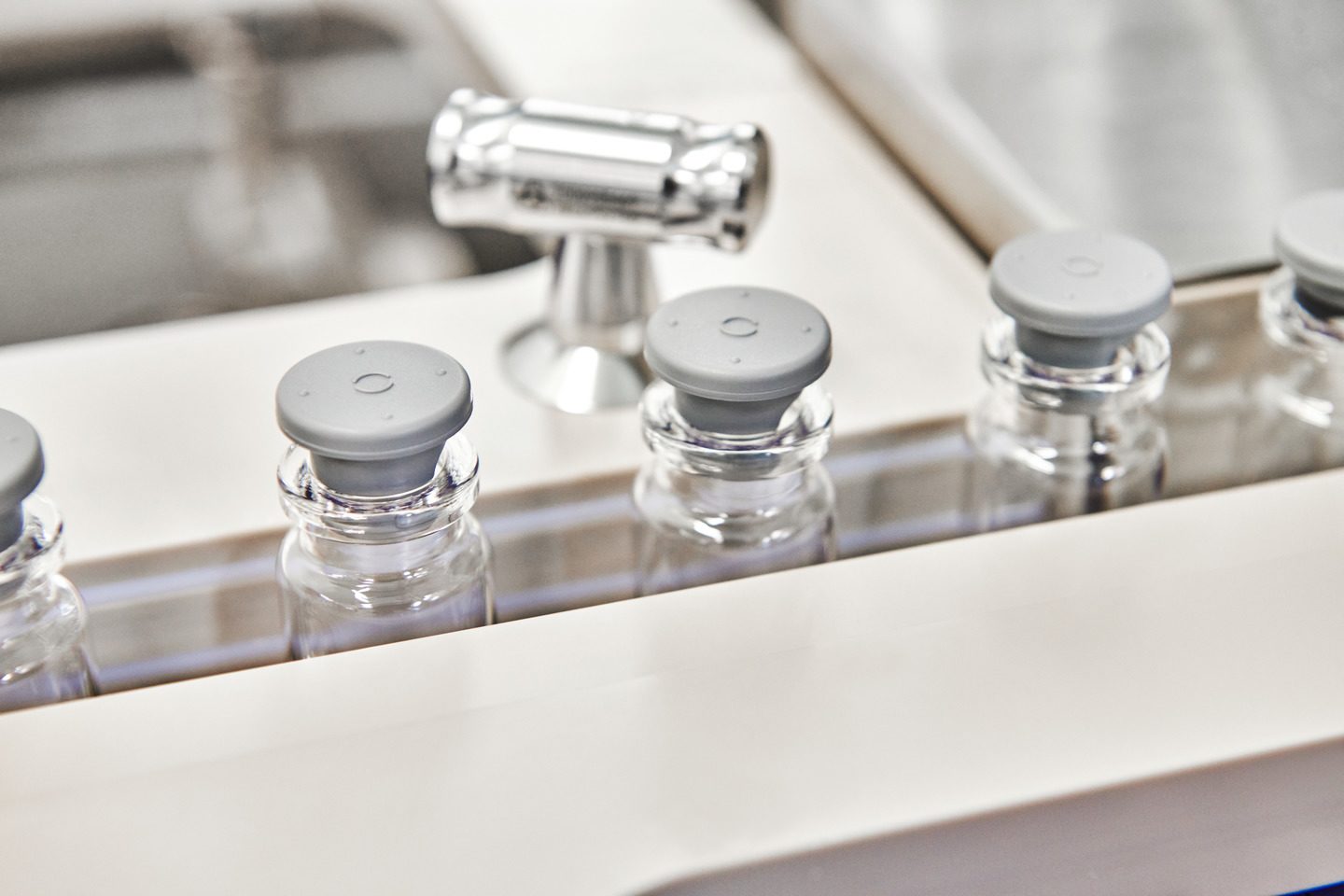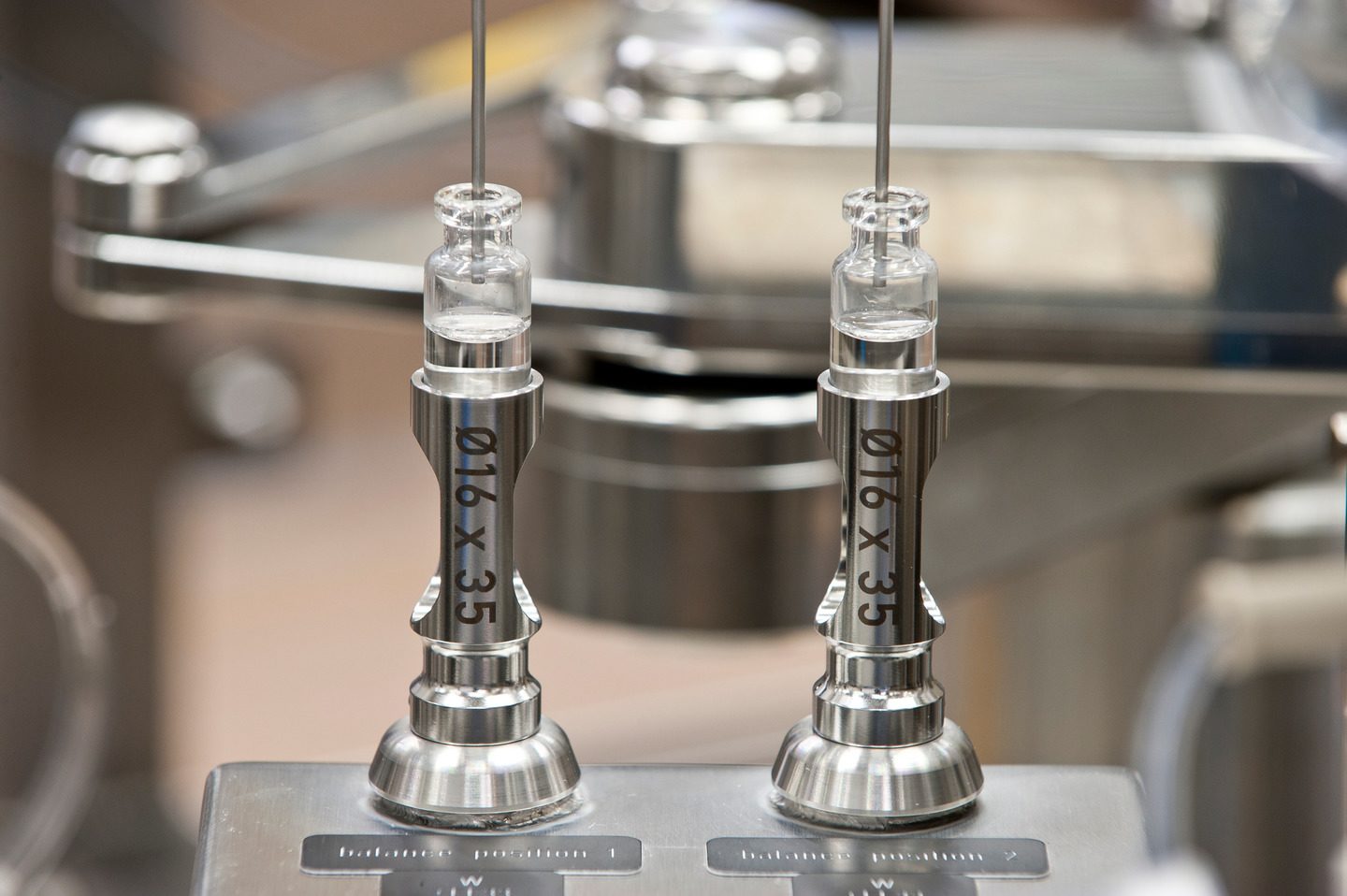
Clinical trial material (CTM): An essential resource for every in-human study

CTM is often one of the first forms your product will take outside your lab: it’s the human-ready doses that will be used to evaluate your product’s safety and efficacy in clinical trial participants.
Manufacturing a batch of CTM is also one of the first times pharma and biotech companies need to scale up production of their API beyond the volumes needed for R&D purposes.
This complex project involves far more than simply making more of your drug substance. During this process, you and your CDMO will also work together to establish a regulator-ready manufacturing process that generates product doses that are consistently, verifiably safe for use in humans.
The clinical manufacturing services needed to produce CTM are often uniquely specialized, even for an expert CDMO – especially when they involve a sterile injectable. As a result, drug developers frequently seek outside support to help them plan a first-time-right project.
Manufacturing CGMP-compliant clinical trial materials (CTM): Why focus on quality from the first batch

For an injectable medication, the transition from preclinical to clinical development already adds many new procedural, logistic, and regulatory factors to your product development program. At this critical pivot point, pursuing CGMP compliance can feel like a daunting additional layer of complexity. Many drug developers may wonder if it’s worth the investment.
As the FDA has made clear, though, quality standards are critically important in the early stages of a product’s development – and CGMP sets one of the highest standards a therapeutic product can meet.
CGMPs, after all, are more than simply manufacturing best practices: they provide rigorous guidelines for generating products that are safe for in-human use. Early investment in compliance can help smooth a product’s path through regulatory review.
CGMP compliance, of course, is a demanding and ongoing process: “current” best practices are continually evolving in response to new scientific and technological advances, and compliant processes must evolve with them.
But aligning with these guidelines as early as possible can help your program lay strong, strategic groundwork for many future milestones – from successful regulatory clearance, to funding rounds, out-licensing, and more.
So where is the best place to start with producing compliant CTM? The answer to that question may differ depending on many factors, including your molecule type, early R&D strategy, analytical methods, and more.
But for a batch of parenteral CTM, it’s typically most important to start with a strong, strategic plan that factors in four critical steps in a successful clinical manufacturing project.
Let’s take a closer look at them.
Planning your batch: 4 steps to prepare for filling clinical trial material

With a range of clinical financial milestones on the line, drug developers often start a CTM project under pressure to get their product into the clinic as swiftly as possible. But as clinical manufacturing expert Garath Duffy explains in his recent episode on the Vetter Video Hub, a smart, forward-thinking approach to clinical manufacturing should always make time for these four steps:
1. Build a proactive plan
Producing high-quality CTM takes time, especially when a CGMP-compliant batch is the goal. Often, it also takes more API than may be required to simply produce the target number of CTM doses (due to destructive sampling, overfill, and other factors).
Always start by building a schedule that accounts for both aseptic filling and CGMP compliance steps, and plan for a batch size that accommodates extra testing and analyses.
2. Prepare the product
As you get ready to move your product to a manufacturing facility for the first time, both regulators and your CDMO partner will need to know significantly more about the molecule to ensure it’s ready for release to trial sites.
Before your IND is filed – and before the batch is filled – important additional tests are required to assess the product’s safety, stability, and behavior outside the lab.
3. Source the right expertise
A CTM manufacturing project is a multidisciplinary effort that often requires emerging drug developers to onboard a range of new roles. Start thinking about how and where you’ll find the multidisciplinary skills you need to successfully develop and execute your project – including regulatory/CMC, analytics, process development, project management, aseptic filling, quality assurance/control, and more.
You may want to enlist consultants and/or a CDMO partner like Vetter that can fulfill all the necessary roles.
4. Implement cGMP best practices
To produce CGMP-compliant CTM, your manufacturing process will need a quality system that integrates three critical workflows: Qualification of the equipment and personnel who will handle the product, validation of the processes used to fill it, and documentation of every step.
Let’s take a closer look at what each of these three components add to the system that helps establish and maintain CGMP compliance in your CTM manufacturing processes.
Three key components of a cGMP-compliant clinical trial material (CTM) supply
Rigorous qualification, thorough validation, and comprehensive documentation are all hallmarks of an effective cGMP compliance program – from early-stage projects like filling CTM to global-scale commercial manufacturing endeavors.
For an in-depth look at all three of these components, watch this recent episode of the Vetter Video Hub featuring Qualified Person Dr. Gerhard Reuter:

Here’s what each component contributes to your compliance program, and why all three are essential to a cGMP-compliant batch of CTM.
1. Qualification
When it comes to manufacturing CTM, establishing the right combination of drug substance, trained manufacturing experts, and state-of-the-art equipment is a vital first step in cGMP compliance. At the very beginning of your CTM project, your CDMO will begin to evaluate which technology and team will be the best match for your molecule.
“Qualifying” that molecule on specific equipment involves detailed assessment of specific filling machinery, sterilization equipment, container types, tubing, and much more – each one of them managed by manufacturing experts with deep, relevant experience in both the technology and the type of substance it will be used to fill.
Qualifying your product – with the specific combination of equipment and expertise that will be used to fill it – is a fundamental step as you monitor each drop from API handoff to product release.
2. Validation
The second essential component of a cGMP-compliant CTM batch is manufacturing processes that have been shown to consistently result in an identical drug product – the exact same molecule, components, concentration, viscosity, and more – for every unit, every time.
To achieve this kind of validation, your CDMO must account for many different facets of the process used to fill your product: for example, validating the specific filter(s) selected for your product, locking in specific testing methods for multiple points in the process, and conducting media runs to test and verify all these facets before filling your actual CTM.
It's important to note that these critical steps in the validation process often require some amount of drug substance above and beyond what’s needed to produce your CTM. Be sure to account for that requirement in your batch size calculations.
3. Documentation
Ultimately, your manufacturing processes will be submitted to regulatory authorities responsible for approving your product for in-human use. And those regulators will expect your processes to be documented in detail – including how they were developed, why they’re appropriate for your molecule, and how you verify that they consistently produce an identical, high-quality drug product that’s safe enough for in-human evaluation.
As Dr. Reuter and his team like to observe: if it isn’t written down, it simply didn’t happen! You need detailed records on how your processes were developed, how they evolved during the development cycle and why, and a rationale for those process pivots.
These details will form critical components of your regulatory submissions to the FDA, EMA, or other similar authorities – all of whom will expect to see a documented thought process for how you and your CDMO arrived at your approach to manufacturing your product.
An experienced CDMO will factor in detailed documentation steps as part of their Standard Operating Procedure (SOP). Be prepared for the time those steps will require to support your product’s alignment with cGMP.
Take the time to get it right
Each of these three components is critical to any strategy for producing a CGMP compliant CTM batch, as well as the success of the 4-step planning approach outlined here.
But they’re ultimately just a starting point for what should be a truly comprehensive approach to implementing manufacturing best practices as early as possible in the development of your injectable drug product.
Each of these components demands specific expertise and its own carefully planned approach, but they all share one critical requirement: time.
Qualifying equipment and manufacturing teams, developing and validating processes, and documenting every step along the way – all these activities must be accounted for in your timelines to confirm that your final project outputs are CGMP compliant.
Building in that time is worth it. Planning for CGMP compliance can be a smart route to saving time, money, and headaches in a critically important period of your product’s evolution. To learn more about how we can support you with that effort, reach out to our team of experts at any time.


